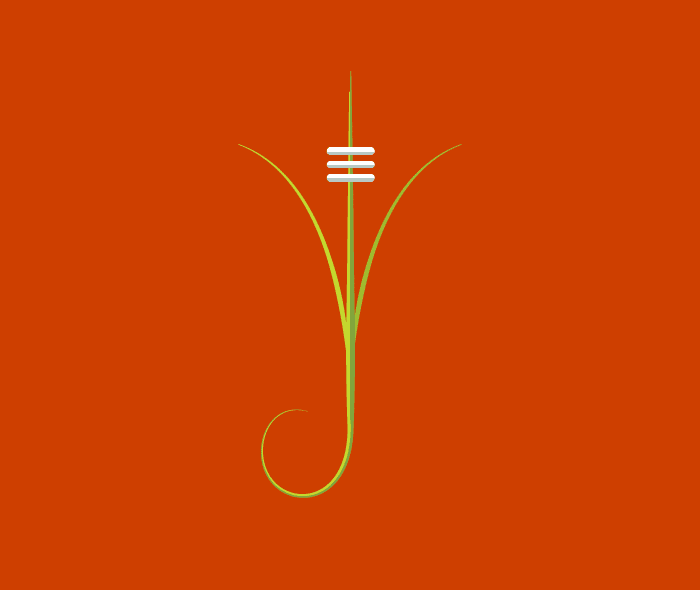Ganesh, the epitome of the earth element, is the symbolic representation of the state of consciousness in which all obstacles are transformed into opportunities.
There are 21 herbs that closely relate to this playful and graceful elephant-headed deity.
This group of herbs of Ganesh have a low G.I. (glycemic index), they strengthen the liver, help the lymph and are good for the skin.
Interestingly, elephants mostly eat low GI foods. They also need a strong liver capacity to be able to digest the copious amount of food they eat!
The leaves of these herbs are also used in Ganesh Patra Puja performed on Ganesh Chaturthi day.
21 HERBS OF GANESH
1. Machi Patra (Artemisia vulgaris)
Main uses: For female irregularities, nervous and spasmodic affections.*
2. Brhati (Solanum indicum)
Main uses:
- Helps with the mind.
- Cures body aches quickly (Angamarda) – Its katu and tikta rasa (pungent and bitter taste), heating energy (usna virya) penetrates for quick pain relieving action. (Caraka, Vaghbata).
- Kathya (helps the throat) (Caraka).
3. Duurva (Cynodon dactylon)
English: Conch grass
Main uses:
- Lymphatic system.
- Prevents miscarriage (prajasthapana) (Caraka).
- Varnya – Cooling energy (sheeta virya). (Caraka).
- Urinary system and kidney health.
- One of the most popular plants used for Ganesh. The grass of Ganesh.
4. Aparmarga (Achyranthus aspera)
Main uses: Urinary channel.
5. Vishnu Kranta (Evolulus alsionoides)
English: Dwarf Morning Glory
Main uses: Lymphatic system.
6. Tulsi (Ocimum sanctum)
English: Holy basil.
Main uses:
- Prananvaha srota (respiratory system)
- Anti-Bacterial and anti-viral
- Adaptogen – Tulsi not only helps protect the body from the degenerative effects of stress but also repairs the body from the damage done.
- Read more about Tulsi here.
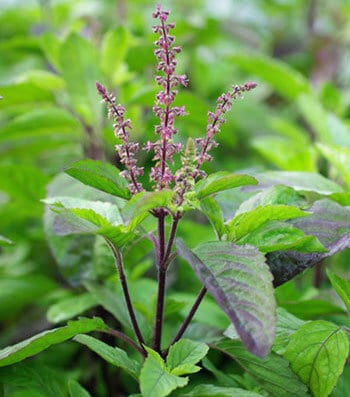
7. Maruvaka (Origanum marjorana)
English: Majoram.
Main uses: Aromatic, carminative, culinary.
8. Karavira (Nerium oleander)
Main uses: Helpful for the skin.
Caution: This is a poisonous plant that is hard to purify.
9. Dadima (Punica granati)
English: Pomegranate.
Main uses:
- Pitta balancing – excess acid, reducing burning sensation (daha), helps internal bleeding (raktapitta).
- Reduces thirst (trsna).
- The rind is used for anti-worm and anti-parasite action.
- Blood purifier and strengthens the heart (Hrdaya) (C.S.).
- Digestion – inflamed stomach and intestines, relieves hyperacidity and nausea, binds loose bowels and helps with dysentery (Pravahika). Helps in spure (celiac) (Grahani), bleeding diarrhoea (raktatisara), bleeding piles (raktarsas).
- Good for the pancreas.
- Chardinigrahana (reduces vomiting).(C.S).
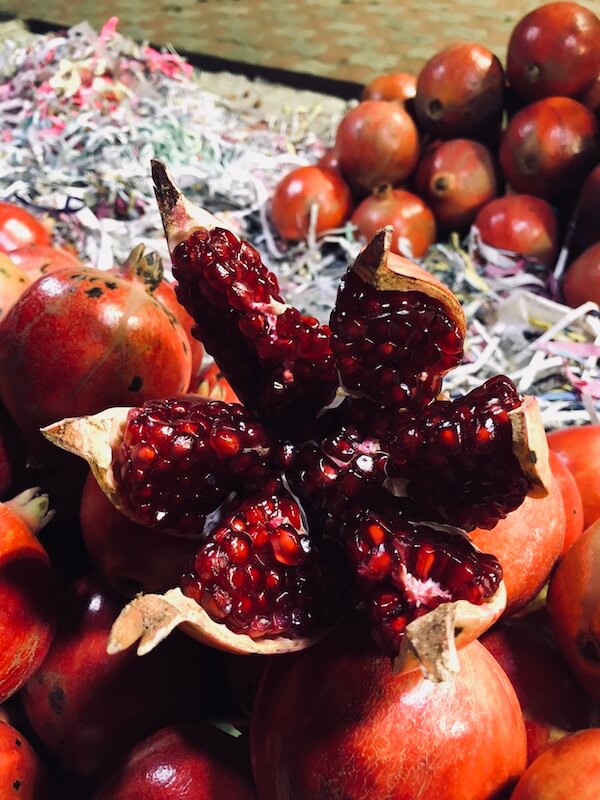
10. Nirgundi (Vitex negundo)
Main uses:
- Excellent to balance vata.
- Great for amavat (rheumatoid arhtirits).
- One action is kapha-vata-hara (reduces both vata kapha). This is rare because vata and kapha are opposites and usually when one increases, the other decreases and visa versa.
- Anti-inflammatory, pain relieving, helps in sciatica.
- Important herb for post-partum mothers (Sutika).
- Good for respiratory tract diseases like bronchitis.
- Good leaf to incorporate in Patra Poultice treatment.
- Anti-parasite (Krimighna) action due to usna virya, katu rasa and katu vipaka (Susruta and Vaghbata).
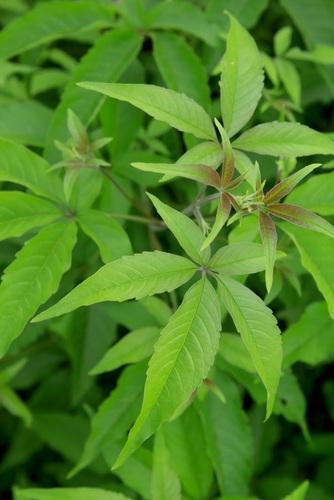
11. Jati (Jasmimum grandiflorum)
English name: Jasmine
Parts used: Flowers and Leafs.
Main uses:
- Skin disorders (Caraka) with its bitter and astringent taste.
- Heals and purifies wounds (Vrana Ropana and Vrana Shodana).
- Respiratory system – opens the channels, regulated mucus in the system.
- Aromatic and improves the sense of smell.
- Also opens one to more subtle channels with its light and soft quality (Laghu, Mrdu Gunas).
- Reduces all 3 doshas.
- Helpful in disease of the eyes (Akshiroga), ears and head (Shiroga).
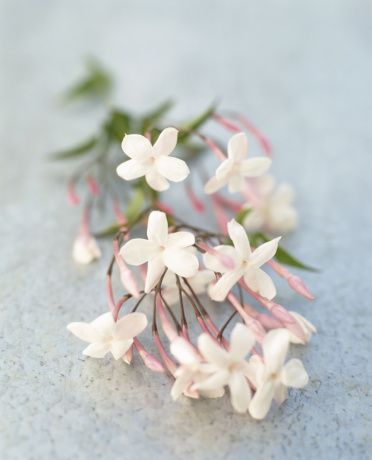
12. Deva Kachanar (Bauhinia tomentosa)
13. Arka (Calotropis procera)
Main uses:
- Tumour (Gulma)
- Anti-parasite (Krmiroga)
- Itching (Kandu)
- Skin diseases (Kushta) (Bhavapraksa)
- Swelling (Udararoga) – When the aggravated vata is localised within the skin and muscles, it causes swelling in the abdomen. (Bhavapraksa)
- Heals wounds (Vrana)
- Asthma (Svasa)
- The sap is the best purgative drug. (Bhavapraksa)
- This is also the plant of Surya (sun), and used in Surya rituals.
Caution: This plant is poisonous if not purified properly.
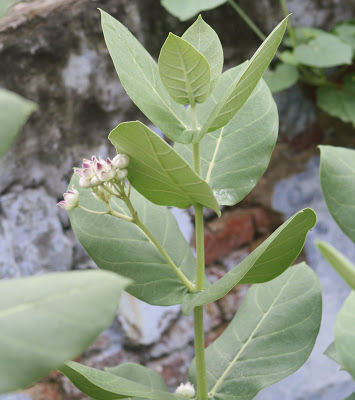
14. Datura (Datura stramonium)
English name: Jimson weed / Devil’s trumpet / Moon flower.
Main uses:
- Antispasmodic Respiratory Support – overcomes the spasm of bronchial tubes (M.M. Nadkarni) to relieve wheezing and tightness in the chest, helping with coughing and asthma.
- Hydrophobia.
Caution: This plant contains toxic alkaloids that produces delirium, hallucination hyperthermia, tachycardia and bizarre behaviour. It must be purified properly. Use Oxalis corniculata in cases of poisoning. (M.M. Nadkarni)
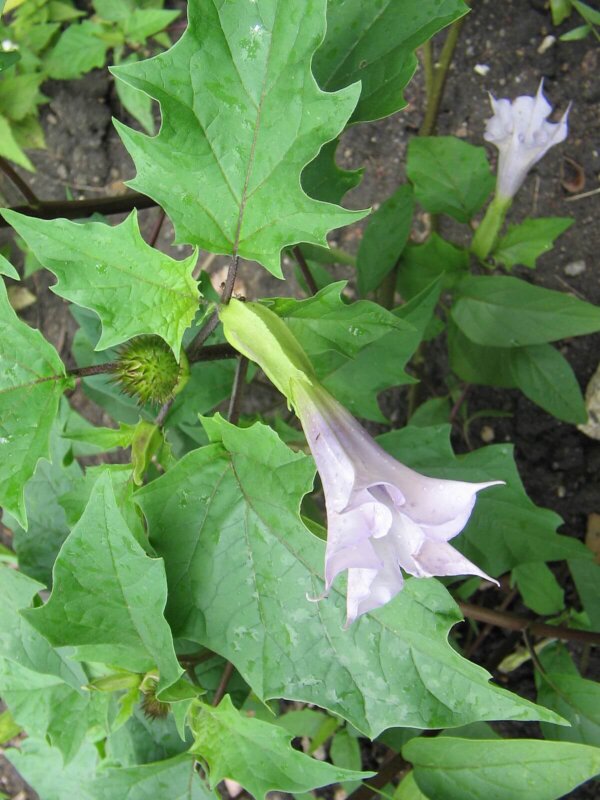
15. Bilva (Aegle Marmelos)
English name: Bael fruit
Main uses:
- One of the best herbs to balance vata.
- Digestion – Enkindles the digestive fire (deepena) with its light quality (laghu guna) and heating energy (usna virya). Thus helps low and sluggish digestion (Agnimandya). Further it’s katu vipaka helps to digest ama (Pachana).
- Grahi – helps dry the moisture of the body and of the wastes. Thus helps in diarrhoea and dysentery (pravahika).
- Balya) – Although this plant is very heating and light, its special quality (prabhava) is that is strengthens the body.
- A plant of Lord Shiva, thus the leaves are used in intentional ceremonies to balance the destruction operator in nature (Shiva).
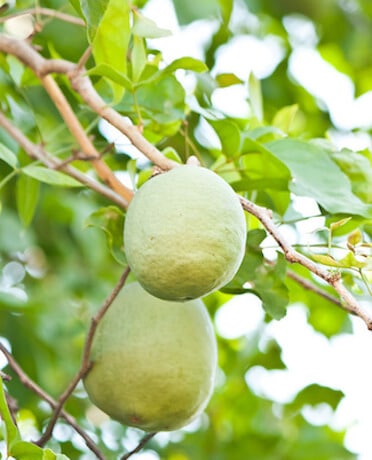
16. Badari (Ziziphus mauritiana)
English names: Jujube, Indian plum, Chinese date, Chinese apple.
Main uses:
- Urinary calculus.
- Nausea and vomiting, typically caused by liver imbalance.
17. Amra/Chuta (Mangifera indica)
English name: Mango
Main uses:
- Good for the heart, (Vaghbata).
- Anti-emetic (Vaminigrahana), (Vaghbata).
- Anti-diuretic (Mutragrahana), (Vaghbata).
- Purifies semen and blood (C.S.).
- Improves taste (C.S.).
17. Devadaru (Cedrus deodarus)
English name: Himalayan Cedar
The sanskrit name of this very tall tree translates to “wood of the gods.”
Main uses:
- Many vata diseases (Susruta) like Amavata (rheumatoid arthritis).
- Urinary diseases including diabetes (Prameha) – helps reduce kapha with its light quality (laghu guna), bitter taste (tikta rasa) heating energy (usna virya) and pungent post-digestive effect (katu vipaka).
- Cough (kasa) – Its bitter and pungent taste is the perfect combination to remove kapha; it dries the excess mucus and therefore helps to clear the wet stagnation. Its snigdha and unctuous property loosens phlegm and facilitates expectoration helping to alleviate kapha and dry excess mucus. (A.P,I., S. Pole)
- Digestion – Enkindles agni (Deepana) (D.V.S.) to help in weak digestion, especially associated with distention. As it alleviates vata it can reduce intestinal spasms and cramping by relaxing the nervous system and easing flatulence. Clears constipation by relaxing and lubricating the bowel.

19. Shemi (Prosopis spicigera)
Main uses: Pacifies the skin with its cooling energy (sheeta virya).
20. Ashvattha (Ficus religiosa)
English name: Sacred Fig / Bodhi Tree
Hindi name: Peepal
Main uses:
- Female hormone issues like gonorrhoea and STIs. Its astringency helps with leucorrhea.
- It’s astringent quality helps with aphthous mouth ulcers and dysentery.
- It’s cooling energy (sheeta virya) helps in skin diseases and imparts skin colour complexion (Varnya).
- Very good for Vata diseases like Vatarakta (gout).
- A very important and holy herb in the Vedas. Buddha acquired enlightenment sitting under this tree. One of the few trees that emit oxygen 24/7.
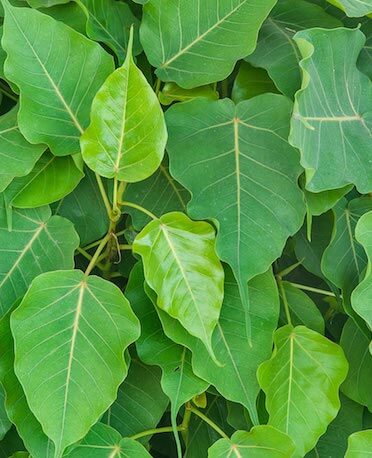
21. Arjuna (Terminalia arjuna)
Main uses:
- Hrdya (“Taking and Giving”) – Supports the parts of the body that “take and give” continuously. Such as the Heart (taking and pumping blood continuously). The Lungs (continuously pumping prana). Brain (receives and gives impulses), every cell in the body does this same action.
- One of the best Medyas (substances to balance the mind). (Jaimini Brahmana 1/354).
- Urticaria (Udarda prasamana) – (Caraka). It’s cooling energy (sheeta virya) helps other skin conditions to.
21 herbs of Ganesh as per Sula Purana.
Herbs of Ganesh Garden, Tirumala
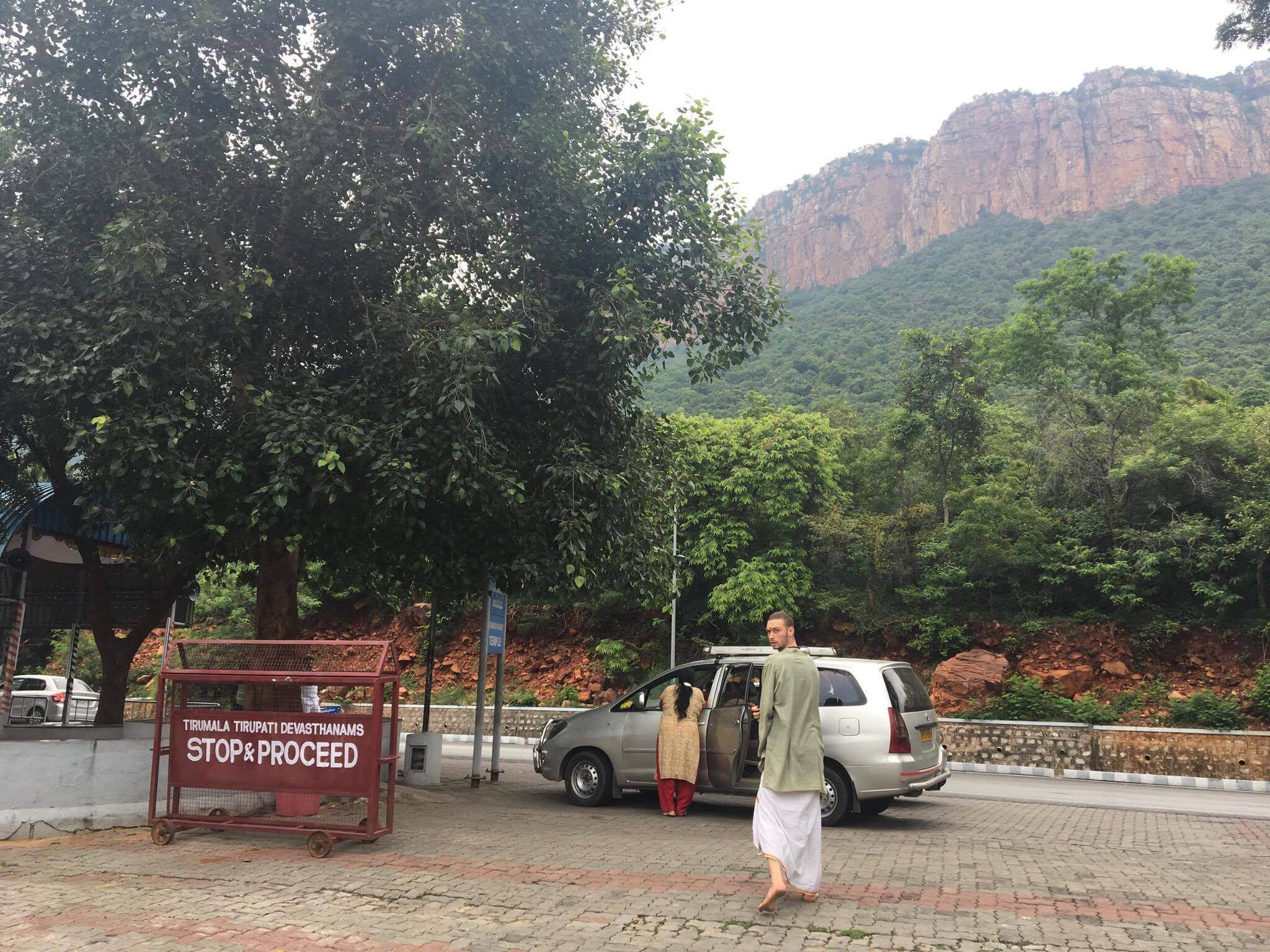
These herbs are grown in a garden in Tirupati, India, on the road up to Tirumala hill next to the Ganesh temple. This photo is outside the garden.
Check out our special medicated ghee prepared with help from Ganesh.
Abbreviations:
A.P. I. – Ayurvedic Pharmacopeia of India.
D.V.S. – Dr. J. N. L. Sastry, Dravyaguna Vijnana.
C.S. – Caraka Samhita.
A.S. – Astanga Samgraha of Vaghbata.
Photo credits:
feature photo: White Wall Studio
Jati: Pintrest.
Arka: Plantas: Beleza e Diversidade
Datura: Taka, Wikipedia.
Bilva: Kens Nursery.
Devadaru – Pablo Evans
Ashwvatta – Alexey Sergeev

